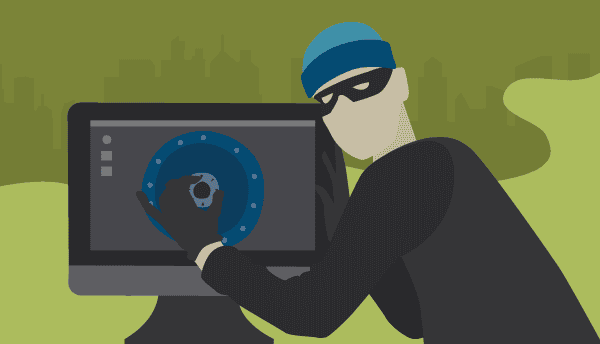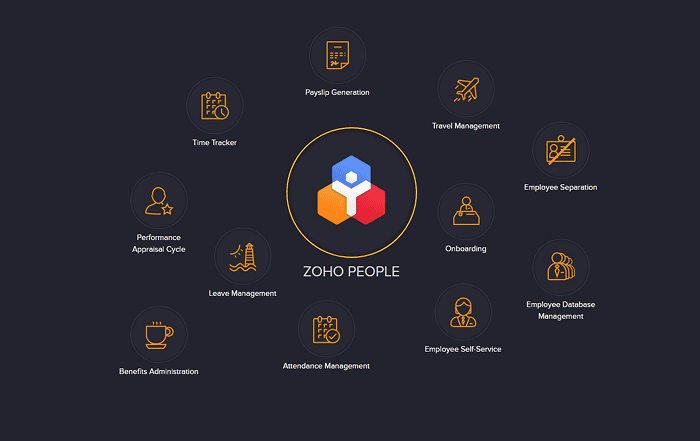
IT acts as the first barrier in your physical security system and protects your cloud-based physical security features from interception. Merging digital and physical security is necessary to protect your building and the assets stored within your facilities.
Cybercrime costs businesses $2.9 billion every minute and can affect your physical security too. So, how can IT be implemented to enhance and protect your physical security strategy?
Keep reading for a guide to using IT to support physical security including protecting your physical security installations from interception, creating a cohesive security strategy, and applying cybersecurity principles to your physical security plan.
Ways Your Business Can Use IT To Support Physical Security
Here are some of the key ways you can use IT as an important function in your overall physical security strategy.
Using Cybersecurity Software To Protect Your Physical Security Installations
Physical security is becoming connected to the internet of things, and cloud-based security technologies are implemented into physical security strategies. For instance, cloud-based access control technology is increasingly popular, as it makes remote operation of door locks possible.
Access control technology secures buildings and ensures that only authorized personnel can gain entry. Cloud-based mobile technology can provide this added security without inconveniencing employees. You can use mobile credentials with a commercial keyless door entry system instead of keys and keycards, which can be easily lost and are more difficult to replace.
Access control readers can communicate with mobile devices using Bluetooth, making it possible for users to open doors without presenting their mobile devices directly in front of the reader.
However, with the added convenience of a cloud-based access control system comes the added consideration of cybersecurity. Hackers could compromise your physical security should hackers gain access to the remote features of the system.
To prevent this potential security event, cybersecurity software can be integrated into your physical security system to prevent interception and ensure your access control system is foolproof and provides air-tight protection for your business
Merging IT And Physical Security Teams
In a world where IoT and cloud-based technologies are becoming a part of physical security and daily business operations, it is no longer possible to conceive of physical and digital security as separate concepts. Housing IT and physical security teams separately could be detrimental to the handling of security threats and breaches. It can be difficult to determine which team is responsible for different elements in your security structure.
To remove the confusion regarding each team’s jurisdiction, you can merge both teams to create one overarching security protocol. By merging physical and digital security teams, you can ensure faster communication and thus quicker resolution of security incidents. Combining units reduces the workload and can identify redundancies and the potential to downsize your team.
In merging both teams, they can collaborate on responses to cyber-attacks affecting physical security elements. You will have a modernized security strategy to meet the challenges posed by the modern security climate.
Optimizing Physical Security With AI And Analytics
You can apply AI and analytics to data gathered from physical security tools to optimize their function and help you to make the most of your security installations. Security cameras have two primary functions – acting as a deterrent for crime and providing evidence should a crime occur.
Your security staff has numerous responsibilities and may not work around the clock, meaning they cannot consistently monitor the security camera feed. It follows that they can less identify security threats using your camera system and prevent a crime from occurring.
By implementing AI and analytics, alerts can be triggered when a security threat is identified, notifying your security staff and allowing them to intervene and potentially prevent a security breach. This merger of physical and digital security elements provides an optimized physical security system that can avoid violations rather than simply offer evidence.
Applying Zero-Trust Across Cyber and Physical Security
A zero-trust policy is usually applied to cybersecurity, ensuring that only authorized users gain permissions and access to data necessary for daily operations. Zero-trust does not infer the trustworthiness of employees and prevents the occurrence of an internal data breach. Restricting employee access and having their obligations ensures that cybercriminals can’t hack into the network while they work from home.
You can also apply a zero-trust security strategy to your physical security. By installing internal access control door locks in your building, you can prevent internal breaches by only granting employees access to the areas necessary for their working operations. This also means that if their mobile access credentials are intercepted, the unauthorized user will only gain access to a limited portion of your building’s facilities.
Summary
Physical and digital security can no longer be treated as distinct. To protect your data and business from the challenges posed by IoT and cloud-based technologies, which make cyber attacks on your physical security system possible, you must implement IT alongside physical security. With a merged physical and digital security strategy, your business will have air-tight and futureproof security measures.



